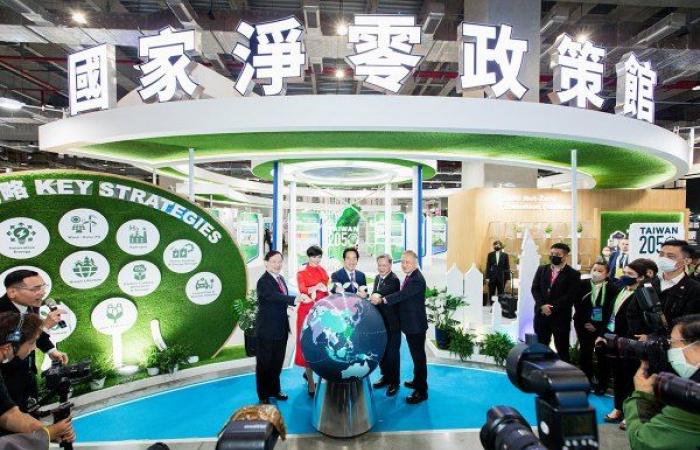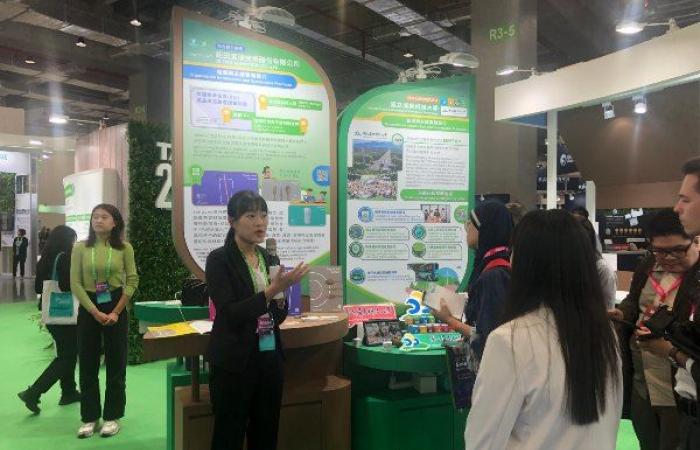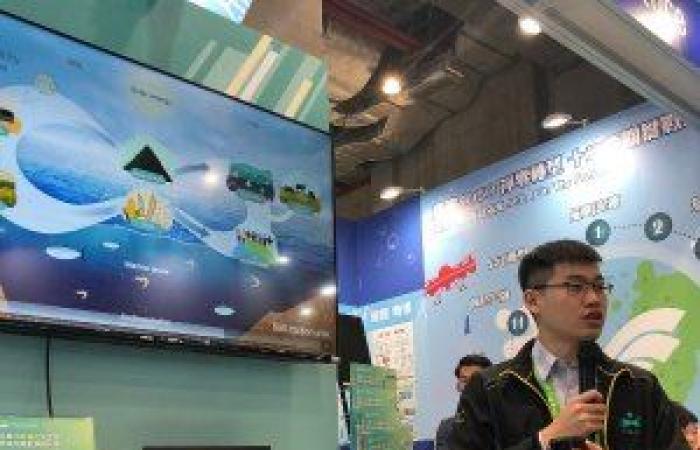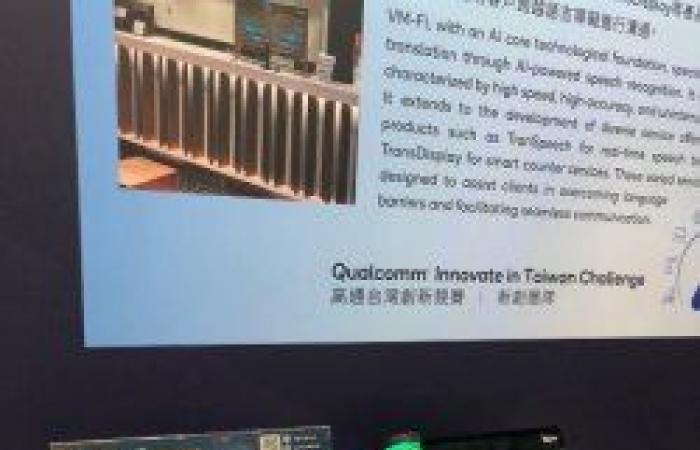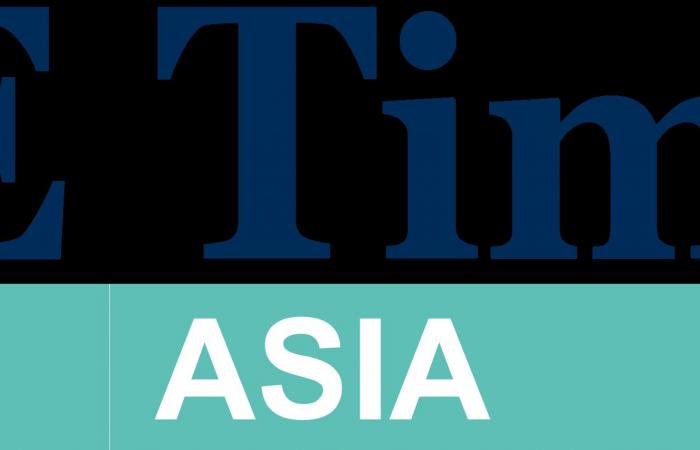Article By: Stephen Las Marias

Taiwan’s ‘Net Zero’ efforts are among the key highlights at the recent Smart City Summit and Expo (SCSE) 2024.
Taiwan’s ‘Net Zero’ efforts are among the key highlights at the recent Smart City Summit and Expo (SCSE), which was held from March 19–22 at the Taipei Nangang Exhibition Center Hall 2 in Taipei. Now on its 11th year, SCSE was organized by the Taipei Computer Association (TCA), the Kaohsiung City government, and the National Development Council.
During his opening speech, Secretary-General Chia-lung Lin of the Presidential Office said the government has been working very hard to transform Taiwan into a tech island. Leveraging its strengths in the ICT industry, Taiwan has been successfully developing a diverse range of smart city and net-zero city solutions over the past decade—and the SCSE serves as a platform to put the spotlight on these solutions, promote them globally, and encourage collaboration with countries to advance smart cities and net-zero city initiatives.
Meanwhile, Minister Ming-Hsin Kung of the National Development Council said achieving net-zero emissions by 2050 is a crucial development goal for Taiwan.
Charting the Course to Wi-Fi 7 Excellence: Unveiling the IEEE 802.11be Standard
In line with this goal, the Taiwan government officially launched the net-zero emissions plan this year. In partnership with the TCA, the government organized the “2050 Net Zero City Expo,” which is aimed at advancing Taiwan’s carbon reduction efforts based on the scale and global recognition of the SCSE and fostering collaboration with cities worldwide to jointly achieve this challenging goal.
Net Zero Solutions
Kung said achieving net-zero emissions should not be viewed solely as an increase in business operating costs, but as a prime opportunity for business transformation.
To highlight Taiwan’s Net Zero efforts, SCSE featured a Net Zero exhibition that showcased initiatives and programs from eight government ministries, along with other research institutions, universities, and enterprises related to the “12 Key Strategies for Taiwan’s 2050 Net-Zero Transition”, as approved by the Executive Yuan.
Government departments featured their net-zero plans for the key strategies, while research institutions and businesses exhibited corresponding net-zero emission solutions.
One of the exhibitors is the National Development Council (NDC), which presented the government’s strategies and policies for achieving net-zero emissions. Taiwan officially published its blueprint “Taiwan’s Pathway to Net-Zero Emissions in 2050”, which provides the action pathway to achieve net-zero emissions by 2050. Based on four major transition strategies—Energy Transition, Industrial Transition, Lifestyle Transition, and Social Transition —the blueprint aims to promote technology R&D and innovation in key areas, guide the green transition of different sectors, and drive a new wave of economic growth.
NDC showcased some of the current accomplishments under the “12 Key Strategies.” For instance, under the Strategy 1 (Wind/Solar PV), the Renewable Energy Development Act, which requires new buildings to be equipped with solar PV, was passed in June 2023; 27 shared booster stations with total shared capacity of 2.277GW were approved to concentrate grid connection; and the integration of solar PV and energy storage saw four phases of bidding and capacity allocation conducted, resulting in 13 successful bidders acquiring 123.15MW energy storage capacity. One of the key milestones under Strategy 1 is the achievement of a total 13.31GW cumulative installed renewable energy capacity.
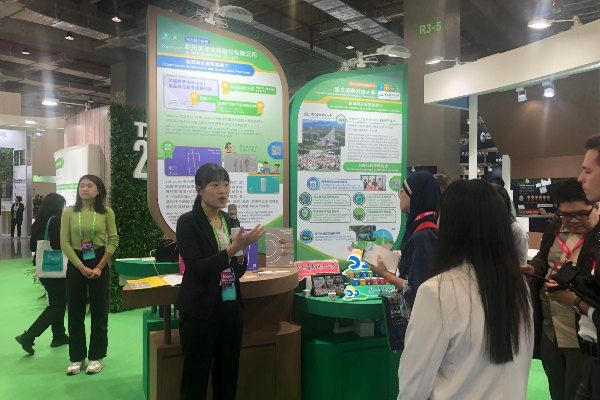
Another highlight was hydrogen. Under Strategy 2, key achievements highlighted by NDC include unit tests of 5% hydrogen blending in December 2023 and demonstration and verification of 5% hydrogen blending for power generation at Hsinta Power Plant in 2025; as well as the development of methane pyrolysis technologies for hydrogen production, and integration of Taiwan’s first 65kW hydrogen blending micro-turbine power generator.
Meanwhile, under Strategy 7 (Carbon-Free and Electric Vehicles), key achievements include 21% penetration of electric buses, 3.3% and 15% market sales ratio of electric passenger cars and electric scooters, respectively.
Through the implementation of the 12 Key Strategies, Taiwan will be able to reduce carbon emissions by 72 to 76 million tons, which is equivalent to 29% of the carbon emissions in 2020; attract over NT$4 trillion in private investments; and create NT$5.9 trillion in industry production value from 2023 to 2030. It is also expected to create 551,000 jobs as a supply chain forms around net-zero transitions, including solar power, wind power, electric vehicles, and energy storage equipment in Taiwan.
Smart City Technologies
Hon Hai Technology Group (Foxconn), the biggest electronics manufacturing services (EMS) provider worldwide, is investing its resources in promoting AI-enabled technologies for smart living.
At SCSE, the company showcased how its CityGPT core software platform CityGPT uses the Model T and electric vehicles (EVs) as mobile IoT vehicles to collect all city data, and then synchronize it to the smart city open platform and share it with solution providers. The platform uses the ‘App Store’ concept to connect smart transportation, smart tourism and a series of food, clothing, housing, transportation, and many other services—to further drive the vision of smart cities.
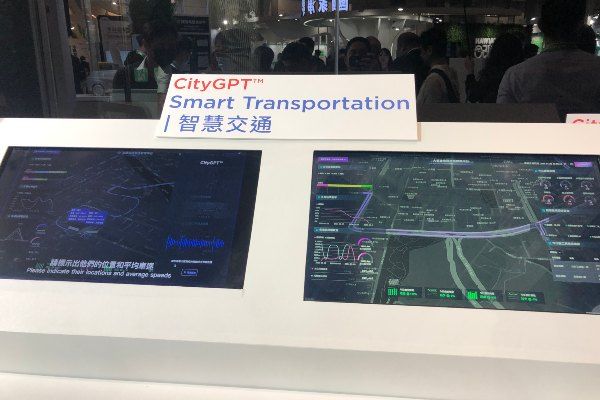
The CityGPT aims to address various needs such as smart transportation, living, entertainment, and connects different information nodes—serving as the city’s platform to provide more convenient urban life services.
Decarbonation
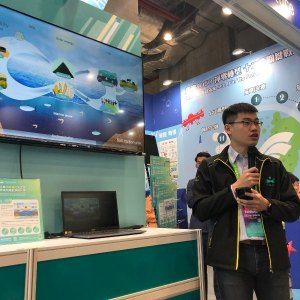 One of the 12 Key Strategies under Taiwan’s 2050 Net-Zero Transition plan is carbon capture, utilization, and storage (CCUS). At SCSE 2024, Violon Biotech Co. Ltd showcased its research, Industrial Carbon Capture & Biologically Accelerating Carbon Removal and Utilization by Microalgae.
One of the 12 Key Strategies under Taiwan’s 2050 Net-Zero Transition plan is carbon capture, utilization, and storage (CCUS). At SCSE 2024, Violon Biotech Co. Ltd showcased its research, Industrial Carbon Capture & Biologically Accelerating Carbon Removal and Utilization by Microalgae.
In line with the goals of decarbonization, Violon’s technology converts CO2 into the hydrosphere to form HCO3, and then converts it into algae powder through rapid photosynthesis of microalgae. The algae powder is made into feed for animals, redistributes carbon elements into the biosphere, and stores them in organisms to slow down the return of CO2 to the atmosphere, while producing food that is beneficial to humans.
Violon Biotech’s CCU+CDR technology can help hard-to-abate sectors quickly and massively reduce emissions, especially in industries such as power, refining and petrochemicals, cement, cement, steel, and industrial sectors.
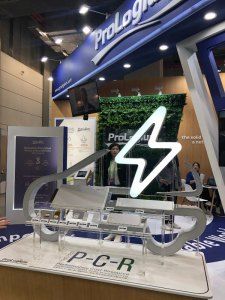
Another company showcasing its path to decarbonization is solid-state battery maker ProLogium Technology. Making its debut at SCSE’s “2050 Net Zero City Expo,” ProLogium featured its exclusive “PCR Next-Generation Solid-State Battery” solution and its pathways to de-carbonization, aiming to develop solid-state batteries that are not only commercially competitive but also sustainable.
The company also unveiled the exterior design of its Dunkirk gigafactory and its strategies to minimize environmental impact—including efforts to achieve major sustainability goals such as reducing energy and water consumption, while prompting the shift towards electric transportation, in collaboration with the EV value chain.
Promoting Startups
One key strategy in helping build an ecosystem around smarter cities and net-zero transition is the promotion, nurturing, and support of startups targeting these sectors.
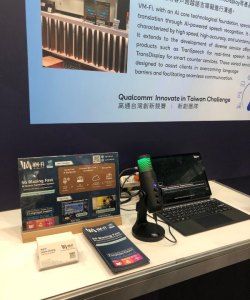 Over the past five years, Qualcomm Technologies Inc., the subsidiary of Qualcomm Inc., has been holding the Qualcomm Innovate in Taiwan Challenge (QITC), which aims to support the development of Taiwan’s ICT ecosystem by identifying and nurturing innovative, new small and medium-sized companies and products in areas such as AI PC, edge AI, 5G, and IoT innovations with Qualcomm’s platforms and technologies. Building upon Qualcomm’s longstanding support of Taiwan’s ICT ecosystem, QITC aims to facilitate the integration of international and Taiwanese innovative ideas and technologies developments to boost innovation in Taiwan, enable new ICT industry dynamics in Taiwan, and increase the competitiveness of Taiwanese startups on the global stage .
Over the past five years, Qualcomm Technologies Inc., the subsidiary of Qualcomm Inc., has been holding the Qualcomm Innovate in Taiwan Challenge (QITC), which aims to support the development of Taiwan’s ICT ecosystem by identifying and nurturing innovative, new small and medium-sized companies and products in areas such as AI PC, edge AI, 5G, and IoT innovations with Qualcomm’s platforms and technologies. Building upon Qualcomm’s longstanding support of Taiwan’s ICT ecosystem, QITC aims to facilitate the integration of international and Taiwanese innovative ideas and technologies developments to boost innovation in Taiwan, enable new ICT industry dynamics in Taiwan, and increase the competitiveness of Taiwanese startups on the global stage .
At SCSE, Qualcomm showcased some of the technologies and solutions from startups it has been supporting, including QT Medical Inc.’s 12-lead diagnostic electrocardiogram (ECG); 3drens Inc.’s SaaS-driven Transportation Management System; Vossic Technology Inc.’s 5G/AI/IoT Automation Solutions; VM-Fi’s real-time translation through AI-powered speech recognition; as well as Avalanche Computing Taiwan Inc.’s hAIsten platform, which empowers users to build, deploy, and optimize AI instantly without coding or cloud reliance—thereby eliminating barriers such as high costs, scarce talent, and long development cycles.

Virtual Event – PowerUP Asia 2024 is coming (May 21-23, 2024)
Power Semiconductor Innovations Toward Green Goals, Decarbonization and Sustainability
Day 1: GaN and SiC Semiconductors
Day 2: Power Semiconductors in Low- and High-Power Applications
Day 3: Power Semiconductor Packaging Technologies and Renewable Energy
Register to watch 30+ conference speeches and visit booths, download technical whitepapers.



